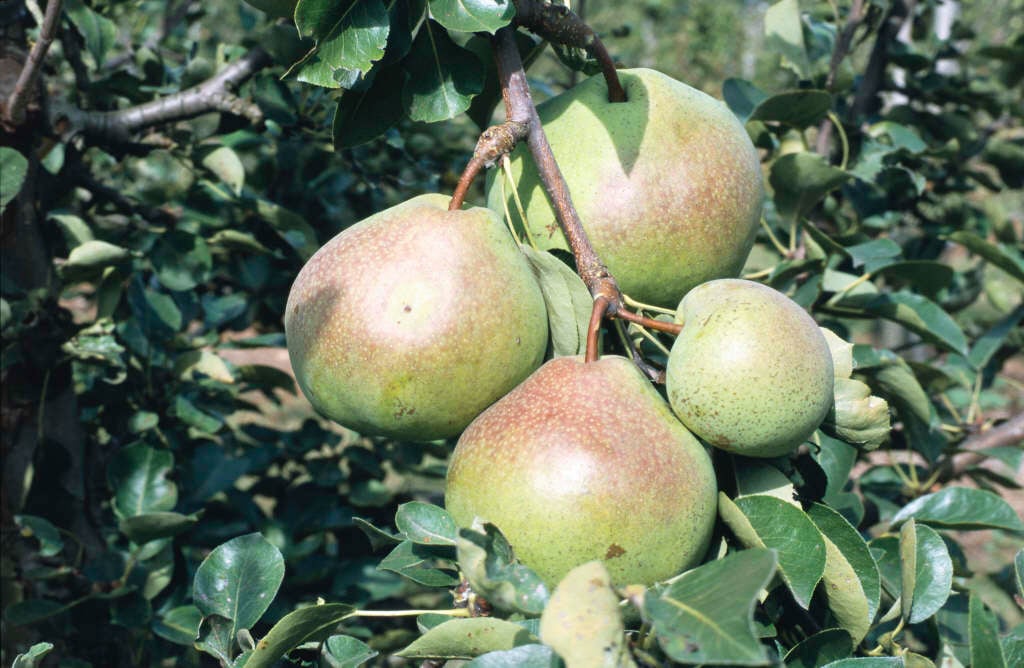Pyrus communis 'Catillac' (C)
pear 'Catillac'
A culinary pear. The fruits are large and hard with slightly gritty flesh that turns pink in cooking. Fairly vigorous, reliable and hardy, but suitable only for very slow cooking. This cultivar has large attractive blossom. The fruit keeps very well after harvesting in mid-autumn. Pollination group 4; triploid. Season of use: January to April

Buy this plant
Size
Ultimate height
4–8 metresTime to ultimate height
5–10 yearsUltimate spread
4–8 metresGrowing conditions
Moisture
Moist but well–drained, Well–drainedpH
Acid, NeutralColour & scent
| Stem | Flower | Foliage | Fruit | |
| Spring | White | Green | ||
|---|---|---|---|---|
| Summer | Green | |||
| Autumn | Green | |||
| Winter |
Position
- Full sun
Aspect
South–facing or West–facing
Exposure
Sheltered Hardiness
H6Botanical details
- Family
- Rosaceae
- Native to GB / Ireland
- No
- Foliage
- Deciduous
- Habit
- Bushy
- Genus
Pyrus are deciduous trees or shrubs with oval leaves and scented white flowers in spring, followed by green or brown fruits, edible in some species
- Name status
Accepted
How to grow
Cultivation
Suitable for all training forms including espaliers, fan-training, pyramids and cordon. Needs another pear cultivar for pollination. Keep a weed free area of 60cm radius around the trunk. Thin fruit if necessary
Propagation
Propagate by grafting or chip budding onto a clonal rootstock for fruit; quince rootstocks are usually used. The rootstock used will effect plant size
Suggested planting locations and garden types
- Cottage and informal garden
- City and courtyard gardens
- Wildlife gardens
- Wall side borders
- Edible fruit
Pruning
Regular pruning required, according to form: cordons, espaliers and Prune established fans. Can also be grown as standards or spindlebushes. For further guidance see: pruning new pear trees, summer pear pruning, winter pear pruning, renovating pear trees
Pests
May be susceptible to aphids, caterpillars, codling moth, pear blister mite, pear midge and pear and cherry slugworm
Diseases
May be susceptible to pear scab, brown rot, blossom wilt, pear rust, fireblight and replant diseases
Love gardening
Sign up to receive regular gardening tips, inspiration, offers and more
View our Privacy Policy
Get involved
The Royal Horticultural Society is the UK’s leading gardening charity. We aim to enrich everyone’s life through plants, and make the UK a greener and more beautiful place.